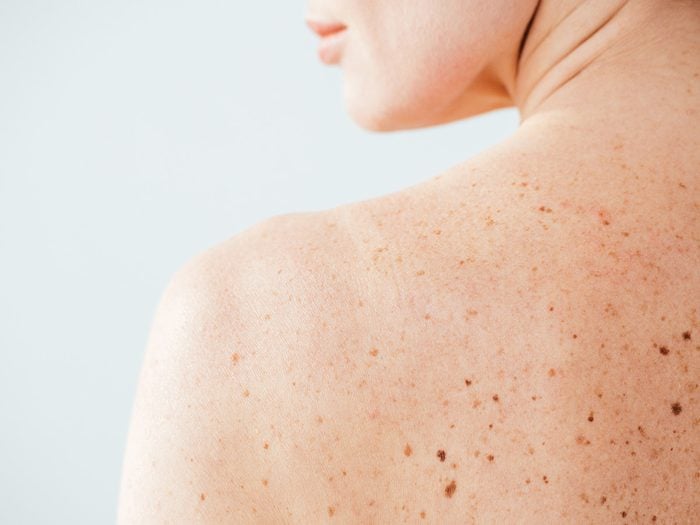How to Spot a Problematic Spot: Use the ABCDE Method

Is it a freckle, a pimple or something else?
Skin cancer can happen at any age. “It depends on cumulative sun exposure,” says Vancouver-based dermatologist Monica Li. “So it’s definitely something to be very mindful of.”
Melanoma is the deadliest form of skin cancer in Canada, accounting for almost four percent of new cancer cases each year and almost two percent of cancer-related deaths.
“That’s why it’s important to periodically look at your skin, no matter how old you are,” says Li. She recommends scanning your face and body about once a month for new and unusual spots. Anything that looks out of the ordinary must be evaluated by a physician. If you notice a new spot on your skin that’s crusted or bleeding, and it doesn’t resolve over two to four weeks, you should see a dermatologist as soon as possible, says Miami-based derm Heather Woolery-Lloyd.
But not all skin cancer is that clear to identify. For suspicious spots no matter your skin tone, Li recommends using the ABCDE method: A is for asymmetry (is it an uneven circle?); B is for border irregularity (does it have jagged edges?); C is for colour variations (does it contain more than one colour?); D is for diameter (is it bigger than six millimetres?); and E is for evolution (has it changed in size, shape and symptoms?). These are general guidelines, and there are exceptions. Still, the ABCDE method is helpful for anyone to self-examine and recognize changes in spots.
What about the areas you can’t see, like your scalp? “If there is a bump, it generally has to be looked at by a physician,” says Edmonton-based dermatologist Marlene Dytoc. Luckily, hair does protect us from the sun, she says, so a bump on your scalp isn’t automatically alarming. And be sure to examine areas of skin that can be easily missed when applying sunscreen, such as the tops of ears, the back of the neck and nails.
Basically, if you notice a spot that stands out, see a doctor. In the meantime, apply sunscreen and wear that hat!
Next: 8 Simple Tricks to Better Protect Yourself From the Sun




